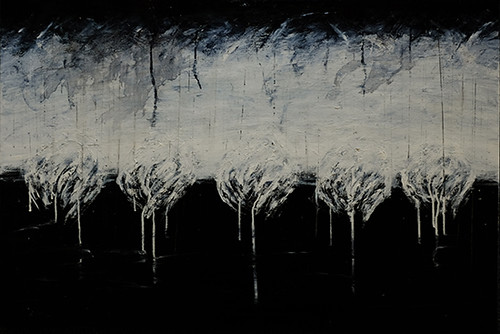A horizontal canvas divided into two zones, upper part is a white space being invaded by dark clouds from top, while the lower half uniformly dark. Connecting and separating these two spaces are five slightly wilting white flowers, caught in the no man’s land between these contrasting zones, with some of these flowers disintegrating and dipping further into the innermost of the dark space, like invading roots grew into hidden soil. This highly contrasting painting, C Major, depicts a world which was both harmonious and polarized, and the little exchange of these two worlds simultaneously terrifies and entices. Additional layers of lines, spots, and scratch marks, give the painting a patina of an aged photograph.
C major, one of the most common key signatures used in western music, was often the key for many Masses and settings of Te Deum in the Classical era, such as works by Haydn and Mozart. Without flats and sharps, C Major perfectly encapsulates the seemingly absolute separation of order and chaos. Though a bit dated and fading, like an old family album, we still yearn for it, for its orderliness and predictability, which seems forever beyond reach; in today’s world, no matter which key dominates, dissonance persists.

